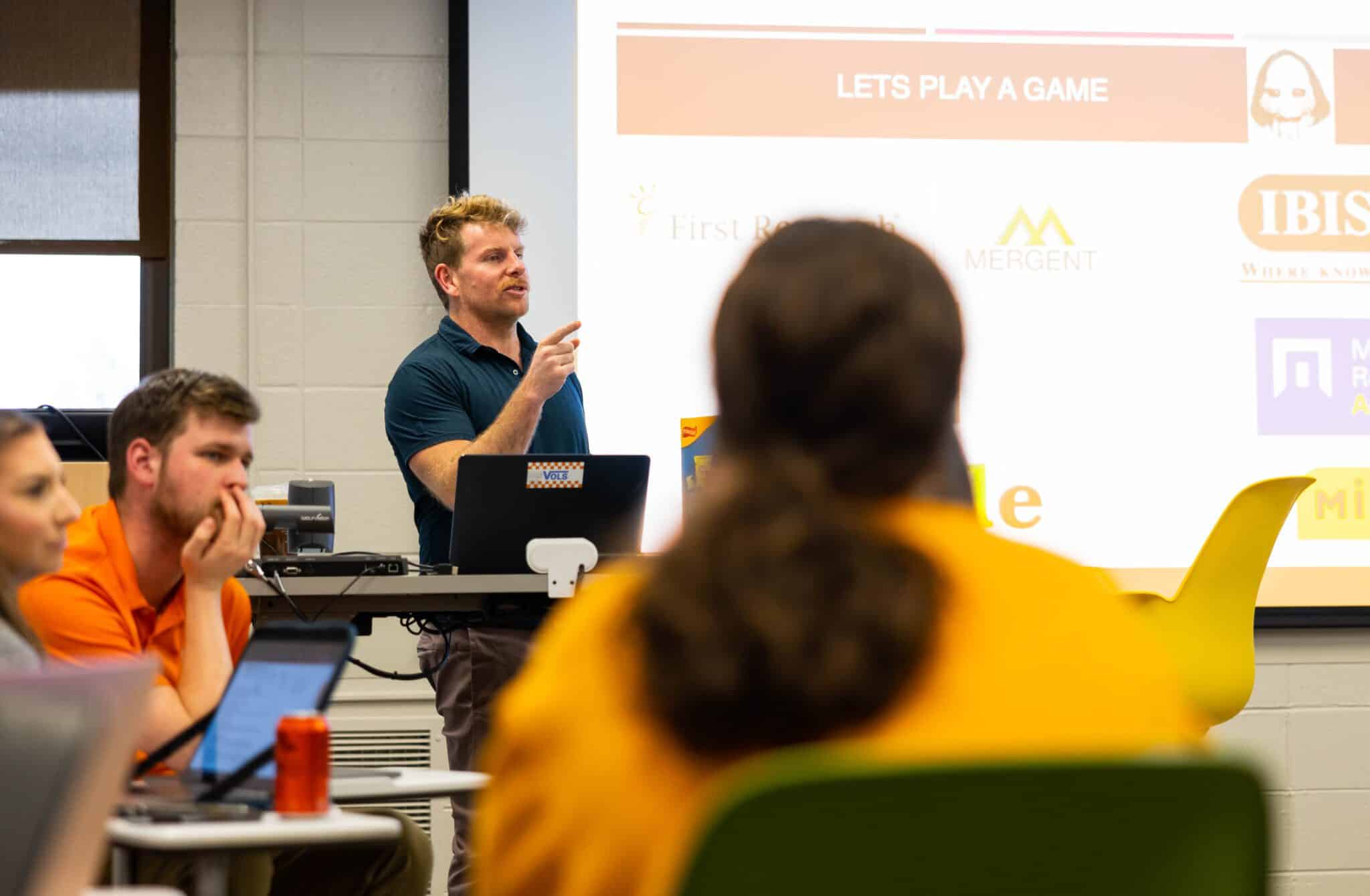Matthew Pittman noticed how much buzz artificial intelligence was creating last spring, especially on college campuses.
Some professors worried that generative AI systems like ChatGPT, which use vast pools of online data to mimic human work, would lead to students cheating.
“I try to be curious instead of fearful,” said Pittman, an assistant professor at the Tombras School of Advertising and Public Relations. “It doesn’t do our students any favors to teach them to irrationally fear something. We just need to honestly look at our digital world and figure out the best way for our students to not just survive but thrive in this environment.”
Pittman devised a project for the social media course he was teaching. He challenged his students to see if AI-created TikToks would go more viral than ones created by the students.
Pittman split the class into four groups of 25. The groups were instructed to pick a product from the VolShop and create two videos promoting the product—one using a human strategy idea and the other an AI-generated idea.
The groups posted both videos on the same TikTok account within the same hour. After a few days, they obtained the metrics to see which video was most popular. The human-created videos had nearly twice as many likes as the AI-generated videos.
“As of right now, AI isn’t going to rise up and destroy the planet. We found that, for the most part, the ChatGPT videos had less views and less engagement while our human ideas had more of both,” said Emma Johnston, a rising junior pursuing a degree in journalism and electronic media. “Even if the AI videos had done better, ChatGPT still needed a human-written prompt/information in order to ‘know’ what idea to give. It couldn’t have just come up with something from complete scratch. Because it’s not a person.”
Before Pittman challenged his students, he used AI-generated technology on his own to find out more about its capabilities.
“I found it really useful for big macro ideas, but not so much for the final stage execution,” he said. “I wouldn’t use it to write a thing. But it’s really good at the big picture to give you some ideas. But the more specificity you ask for, the more it falls apart.”
Mazie Dee, a senior majoring in public relations with a minor in business administration, appreciated having the chance to learn more about AI and keeping an open mind about how it could impact the future.
“I really enjoyed this project, and I am thankful for a professor like Dr. Pittman who encouraged us to use new technology rather than shaming it,” Dee said. “I had a lot of fun working with my team to try and create two different concepts to promote the same product. The best part of the project was following along on our socials to see what other groups came up with and how their ideas compared to ChatGPT.”
Brooke Bixler was initially intimidated by using ChatGPT and assumed it would come up with ideas that were better than humans.
“Once we actually started prompting it though, I realized that it was more useful than scary and didn’t actually have the creative ideas I thought it would,” said Bixler, a senior majoring in computer and information sciences with a concentration in user experience design. “It gave more tips on what hashtags to use and how to make sure it was seen, but it didn’t generate ideas that would replace a humans. I think ChatGPT can help make people’s ideas get more clicks and reach, but it won’t replace the creative ideas that only people have.”
After completing the AI project, Pittman hopes the students learned not to believe everything they read without experimenting with things on their own.
“I don’t want the students to just stick their head in the sand and be afraid of new technology,” Pittman said. “I hope they take out of this a curiosity and willingness to explore new tools as they develop and not just assume they are evil because social media or some website says that. They need to try stuff for themselves and realize that most digital tools have a place in the toolbelt, which in this case is for communication professionals.”
Written by Rhiannon Potkey

